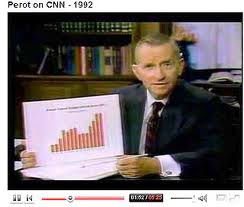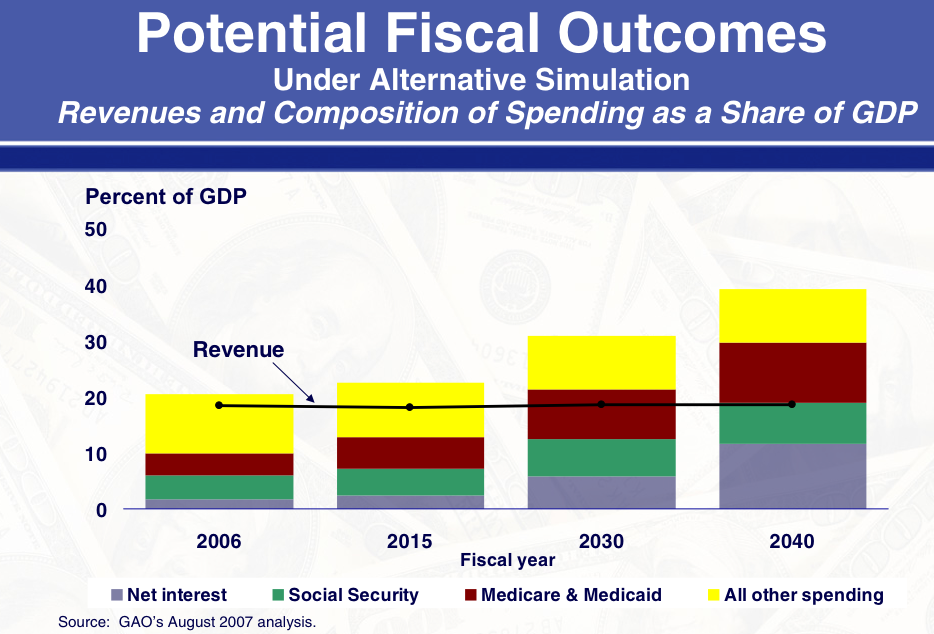Bear with me, folks! Today I’m going to take a little departure from my regular discussion of business performance, and talk a little bit about the manner in which data and indicators are used (or misused) in the debate we are having now with respect to US economic policy and direction. As is often the case, the same principles that are critical to business performance management can be just as valuable in our public policy debates. So I think the departure is both timely and relevant.

Today, the President and Speaker of the House Boehner… Blah…Blah…Blah….(Yawn!)”
If you’re anything like me, these “debt talks” of late have become nauseatingly irritating. No matter which side of the political aisle you occupy or favor, it’s hard for anyone to see this as more than a glorified adult schoolyard brawl. It is certainly not rare these days for our elected officials to engage in such a political circus, but this one has taken on a new level of insanity.
What we have here is a public debate about financial and economic policy that is occurring devoid of any meaningful facts or analysis. I’m not saying that the facts are not there, but they have most certainly been kept out of the public debate, only to be replaced by the rhetoric and soundbites of political hacks. And that’s a recipe for a solution that will at best be a meaningless and impotent compromise , and at worst, a precipitator of market panic and economic chaos.
Needed: Basic Facts (AND a Common Language)…
Many of the conversations I witness on this topic, regardless of whether it’s at the family barbecue, the water cooler, or various financial and academic circles, seem to turn a blind eye to the basic facts necessary to contribute in any meaningful way to the debate. Ignorance? Perhaps. Intellectual laziness? Maybe. Pure emotional politics? Probably.
Sure, we see lots of numbers thrown around, but most of them either lack sufficient context, or are deliberately telling only a fraction of the story. And even those facts need a translation guide to determine what they really mean. Does a tax increase mean a raise in the tax rate, or simply continuing with a previous tax cut? Does spending mean decreasing a future forecast, or a cut to the actual baseline? Without some real digging and filtering of the noise, it’s virtually impossible for the average person to have an educated opinion about any of this. Given how “muddy” the information has become, it shouldn’t surprise anyone that this has taken on a purely emotional level of debate.
Any good debate that has a prayer of resolution, whether in business or public policy, starts with a basic understanding by all parties of a key set of “accepted” facts, understood in the same basic context. That type of “common language” allows the debate to hinge on differences in principle and philosophy, which can be argued toward some resolution (or acceptance of a path forward). Without that common language, the vast majority of the dialogue becomes noise, tied up in debates about the validity and relevance of the data amidst the corresponding rhetoric that accompanies both.
Creating a Common Starting Point…
 Years ago, and for a brief moment, an eccentric presidential candidate with an irritatingly noisy voice attempted to change the debate by introducing some semblance of simple, fact-based information into the political debase using very basic illustrations. It came in the form of hand-drawn posters that were later imitated by nearly all Sunday morning talk show hosts and other political commentators. Who can forget those “white boards” presenting analysis of the conflicting vote counts in subsequent election results?
Years ago, and for a brief moment, an eccentric presidential candidate with an irritatingly noisy voice attempted to change the debate by introducing some semblance of simple, fact-based information into the political debase using very basic illustrations. It came in the form of hand-drawn posters that were later imitated by nearly all Sunday morning talk show hosts and other political commentators. Who can forget those “white boards” presenting analysis of the conflicting vote counts in subsequent election results?
Lately, however, the attractiveness of utilizing SIMPLE factual information to inform these debates has clearly waned. I’m not sure what the main culprit of this is–whether it’s pure information overload, or the shortening of our collective attention spans to be able to process it, but the truth is that simple facts themselves are no longer informing our public debate.

Sure, there have been some attempts to inform the debate through unbiased factual information. For example, the national debt clock presents many key statistics that are pertinent to the debate. And back in 2008, David Walker, former head of the GAO presented, as part of his ” Fiscal Wake Up Tour “ one of the best unbiased visualizations of our collective financial health I’ve ever seen.
Much of what Mr. Walker presented in this undisputed picture of our economic health in 2008 (most of which is still relevant today) would be invaluable as a context and starting point for the conversations our politicians are having at the moment. Instead, we now operate in a world where we launch straight into policy debates without any shared or accepted fact base and no common language.

Stepping up the quality of our debate (in government and business)
Here are 5 suggestions for getting our debates better informed and more relevant:
- Respect the audience– Too many of our leaders refrain from using unfiltered data to drive dialogue within their organizations, largely because they view it as too complex or advanced for the audience to effectively process or comprehend. While your audience may not operate in the same business or intellectual circles as you, most have a capacity to detect BS and see through overtly biased narratives.
- Keep it simple– In some cases, the data needed to inform the debate is in fact complex (particularly in areas like the current debt discussions). In such cases, it’s the leader’s responsibility to simplify it. The above presentation from David Walker is an excellent example.
- Make it visible– Make the information easily accessible and visible. Repetition and visualization are usually the keys.
- Create a common language– be clear on what the information you present means, and the context within which it operates. Context is as critical as the validity of the data itself. Creating understanding and alignment around both are essential in focusing the dialogue toward a productive end.
- Limit the “noise”/ rhetoric- Commentary is ok, and often valuable. But when the narrative departs from the factual information presented, and becomes visibly biased, it becomes mere rhetoric and quickly begins losing credibility.



I like your 4 points – whoops, now there are 5. After all, isn’t #1 – respect your customer? #2 Keep it simple – make it easy to do business with you. #3 – We aren’t all auditory learners so present information in a variety of media. #4 – Create common language – it is only through language that we can achieve any resolution to the present situation so checking for common understanding should be part of every communication. And #5, limiting the rhetoric – by leading with our “position”, we immediately invite opposition. Instead, why not have conversations about what is possible?